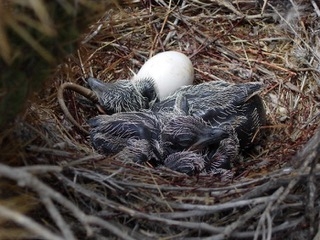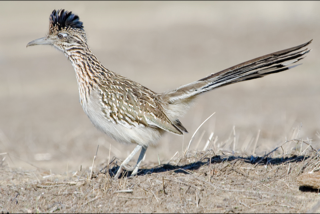Biological controls seem the ideal solution to insect pests. No poisonous residue to harm the plant—or the consumer if the plant is one grown for food. Unlike broad-spectrum insecticides that can damage beneficial insects along with the pest, most biological controls target a specific organism. While the concept is great—after all, it's nature's way—sometimes the reality may not quite measure up to the expectations. Ladybird beetles fly away, and infestations may just be too overwhelming for the limited numbers of beneficial insects we can introduce. What we really need is more predators that we don't have to introduce, predators that are already in the natural environment.
I live at the west edge of Chalfant, California, where the critters are abundant. By the end of our first season, it looked like our major crop was chicken wire cylinders. That winter I secured the perimeter with a fence of chicken wire, three feet up and one foot under the ground, so the gangs of rabbits that roam the streets of Chalfant late at night no longer terrorize me. The ground squirrels are, of course, another story entirely!
But one of the great things about living out here is that insect pests are relatively few when compared with the well-watered gardens of town. Aphids can be an occasional problem, and I finally decided I couldn't win the squash bug war, but other than that, not too bad. There is, however, one insect that would plague me every summer—tomato hornworms. The moths that hover by the dozens, I love—the caterpillars, not so much!
It was earlier than normal this year (mid-June) that I spotted droppings on the ground. A bit of searching and I had soon discarded a few of the invaders, but I was braced for an onslaught.

Shortly after I had dispatched the hornworms from my tomato plants, my wife reported seeing one of the roadrunners perched on a tomato support, and we began to wonder—could he be looking for the substantial meal that a tomato worm would provide? Though we never observed such a feeding first hand, it seemed that the tomato bushes were of particular interest to him in his patrolling of the yard that he continued throughout the summer.
And the hornworms? I never saw another one, nor any droppings or leaf damage on my tomato plants. Was there cause and effect here? This is certainly the only year I have not had hornworm damage and the only year I have had roadrunners in the yard. While the roadrunner is famous for vanquishing rattlesnakes, they are omnivores, so the rest of their diet is less dramatic: small reptiles and mammals, eggs, fruits and seeds, spiders, insects and worms. Coupled with the interest he seemed to show in the tomato plants, I had been feeling pretty confident that I had my own biological control going on. And now I have located the last bit of evidence that convinces me of that. I just now Googled “roadrunner tomato worms” and found a post from someone in Nevada who saw a roadrunner diving in and out of his plants and coming out with a hornworm in his beak.
Now if only I could get the roadrunners to make my tomatoes ripen earlier!
*Regarding the roadrunner's legendary speed, it isn't quite as impressive as the cartoons would have us believe. Top speed for our greater roadrunner (Geococcyx californianus, how's that for a great scientific name?), a member of the cuckoo family by the way, is a somewhat modest 18 mph. Slower than a human top speed of 28 mph, less than half that of a coyote (43 mph), and not quick enough to get away from a major threat to the species—feral house cats (30 mph).
Selected References
“Greater Roadrunner,” Cornell Lab of Ornithology, October 28, 2011.
“5 surprising facts about roadrunners,” Mother Nature Network, April 26, 2017
“Gigantic, icky green caterpillar on my tomatoes!” Houzz, July 30, 2008.
“Kill the Cat That Kills the Birds?” New York Times Magazine, December 2, 2007.
